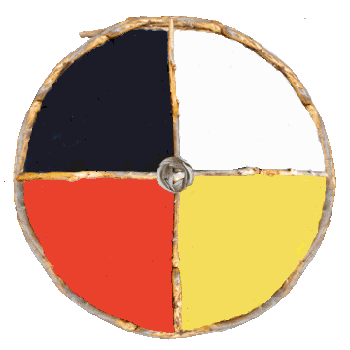
Saints, Feast, Family
- Traditions passed down with Cooking, Crafting, & Caring -
November 18
Saint of the day:
Saint Rose Philippine Duchesne
Patron Saint of Perseverance Amid Adversity
St. Rose Philippine Duchesne's Story
Virgin Born in Grenoble, France, in 1769, Rose joined the Society of the Sacred Heart. In 1818, when she was forty-nine years old, Rose was sent to the United States. She founded a boarding school for daughters of pioneers near St. Louis and opened the first free school west of the Missouri. At the age of seventy-one, she began a school for Indians, who soon came to call her "the woman who is always praying". Her biographers have also stressed her courage in frontier conditions, her single-mindedness in pursuing her dream of serving Native Americans, and her self-acceptance. This holy servant of God was beatified by Pope Pius XII in 1940 and canonized by Pope John Paul II in 1988.
http://www.catholic.org/saints/saint.php?saint_id=377
https://www.franciscanmedia.org/saint-rose-philippine-duchesne/

Prayer



Prayer


Visit:
Shrine of St. Rose Philippine Duchesne
619 North Second Street, St. Charles MO 63301
(636) 946-6127


On this day we will honor St. Rose Philippine Duchesne who began a school for Native American Indians west of Missouri.
Native American Food:
Native cuisine is very diverse and it’s difficult to define in one dish but the one thread that
connects all tribes is that their foods are locally sourced seasonal "clean" ingredients or
indigenous american fruits and vegetables. This would be wild and foraged ingredients including game and fish.
The United States has its own distinct culinary traditions, driven by locally available resources.
Natives living in the Pacific Northwest would have a diet consisting of different types of self-harvested salmon.
Where as Navajo's on the Midwestern plains diet would not have salmon since salmon is regional to the northwest.
Seminole & Creek/Muscogee diet would have seafood but it would be with turtle & alligator.
Their diets would also have raccoons, rabbits, deer, and corn in many forms.
Much like Native American cuisine from pre-colonial past, Natives are now emphasizing more on local foods,
this resonates with the new movement of Natives reaching back into their history and eating healthy again.
Amazing Native Foods are
Barbecued salmon,
Seaweed covered, hot rock baked Lobsters,
Seminole Sauteed Alligator Tail,
Wild rice topped with cedar-braised bison,
Cherokee 'Good Deer '
Terrapin turtle stew,
maple-roasted veggies,
wild greens,
cranberry sauce,
“indigenous taco”
Corn fritters,
grits,
succotash,
Brunswick stew,
Corn and squash,
beans and potatoes,
chili,
Boston baked beans,
sumac-crusted turkey,
bison tenderloin,
wild rice cakes,
blue corn bread,
heritage bean salad,
and pumpkin pie.
—just to name a few—all grew out of Native American food traditions.
And next week, on Thanksgiving give remembrances of all these amazing culinary masterpieces
which remind us of comfort & home but also of the people who were here first.
Just like their food, the native people have their own beautiful distinct style
Each region is just stunning!

Tlingit Indian (NW region)

Hopi Indian (SW region)

Creek Indian (SE region)

Seminole Indian (Florida region)
All Indian Art, Housing, Jewelry, & Mythology are all different and all regional

Indian Art

Indian Housing

Indian Jewelry

Indian Mythology

Dinner will be Bison, which we found at a local farm in Virginia, with blue corn bread
maple-roasted veggies
cranberries

Recipe
THYME RUBBED BISON SHORT RIBS
The unique mélange of seasonings in this slow-cooking dish yields a hint of citrus flavor.
Serve with thick slices of fresh, crusty ciabatta to soak up every delicious drop of the braising broth.
Ingredients
-
6 tbsp. finely chopped fresh thyme leaves or 1 tsp. dried for spice rub
-
¼ cup fresh minced garlic for spice rub
-
2 tbsp. olive oil for spice rub
-
2 tbsp. freshly grated lemon zest for spice rub
-
1 tbsp. fresh coarse ground pepper for spice rub
-
1 tbsp. sea salt for spice rub
-
4 lbs. bison short ribs (fresh or fully thawed) for braise
-
1/4 cup olive oil for braise
-
1 medium onion, diced in large chunks, for braise
-
1 medium fennel head, diced in large chunks, for braise
-
1 medium celery stock, dice in large chunks, for braise
-
3 fresh thyme sprigs for braise
-
1 medium bay leaf for braise
-
2 cups of low sodium beef broth,
or a mixture of 1 cup broth + 1 cup dry red wine for braise
Directions:
-
Preheat oven to 300°F and place oven rack in the middle.
-
Mix all rub ingredients together in a sealed large plastic bag.
-
Cut racks between the bones to make smaller pieces.
-
Dredge the pieces, in batches, in the sealed plastic bag to cover with spice rub.
-
Remove pieces and let sit for 20 minutes at room temperature.
-
Place oil into a large shallow ovenproof heavy-bottomed pot with a tight fitting lid over medium heat.
-
Once oil has heated, remove lid, add ribs in batches and sear until well browned on both sides.
-
Remove the ribs and set aside.
-
Add onion, fennel and celery to the pot, season with salt and pepper and stir, scraping up any browned bits stuck to the bottom of the pot. Cook until the vegetables are tender (about 10 minutes).
-
Stir in thyme, bay leaf and broth or broth/wine mixture.
-
Gently place ribs bone side up in the pot and bring the whole mixture to a boil.
-
Cover the pot and transfer to the oven. Cook until meat falls apart with a fork (about 4 hours)
-
Place entire mixture into a slow cooker and cook on low setting for 6-8 hours or until fork tender.

